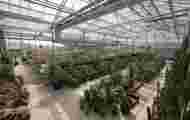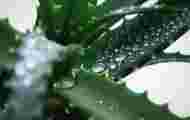Without plants, no life possible. On Earth, plants (as well as microorganisms carrying out the photosynthesis in the oceans) absorb CO2 and release oxygen, which we breathe. What if these living beings also allowed us… to heal ourselves?
⋙ A “miracle” plant, extinct for 2,000 years, rediscovered in Turkey
With his business Benephyt, Eléa Héberlé, a graduate in ethno-pharmacology, is inspired by the plant kingdom in order to help solve one of the ills of our time: chronic pain. “Pain is an unpleasant sensory and emotional experience associated with tissue damage – actual or potential or described in these terms“, she explains to GEO.fr, citing the definition of the international association for the study of pain (IASP). “We talk about chronic pain when it is something that is recurring, and that lasts more than 3 months.“
A dive into the historical collections of plant use
On this crucial and specialized subject, the host and editor of the popular science blog “The Plantoscope” aspire to “overcome the opposition between ‘conventional’ and ‘alternative’ or ‘complementary’ medicine “.”There is much yet to be explored in folk lore, and research is just one medium to advance our understanding of the world.”, she believes. “The goal is not to ostracize practices or ridicule beliefs, but to extend our vision of medicinal practices by drawing inspiration from what we did before..”
When it comes to pain, this one”is mainly treated with analgesics from the opiate family, derived from the poppy – a plant from which opium has been extracted. This type of molecule is very effective, but causes side effects such as dependence or addiction“, explains Eléa Héberlé. “In the long term, the more we use, the more we “desensitizes” – that is to say, you have to take more and more for it to remain effective. We even have “effect returns” : instead of reducing the pain, we will increase it after the treatment – we then speak of hyperalgesia.”
And this is where the famous cabbage comes into play – a plant cultivated since antiquity and of which we eat, depending on the variety, the leaves, the roots, the buds or the flowers. “Our approach consists in looking, in historical collections – such as herbariums or collections of herbal medicine, for mentions of the uses of cabbage or of plants of the same family – that of the Brassicaceae. According to the mentions that we have been able to identify, we will study the plant for this or that indication or property (medicinal)”, explains the researcher.
The work of his team is based on collections of texts from Antiquity – like the translations of works by the ancient Greek philosopher Theophrastus, but also on sources dating from the Middle Ages, such as the writings of Hildegard of Bingen – founder of a monastery in Germany. Also included in their “corpus” of research are herbaria from the 16th and 17th centuries. “We work mainly on the Rhine basin, so we study in particular the texts of the “Kräuterbuch” (literally ‘books of herbs’)books describing the uses of plants“, she completes.
But it’s a 19th century notice (Note on the properties of cabbage leaf – Anselme Blanc – 1882) that most marked the researcher, highlighting the following quote: “to be rare, to come from a distant country, to bear an odd name, to have a monetary value are all considerations which give price to a drug and of which the cabbage leaf is entirely devoid“.”We have always tended to prioritize exotic things, while solutions probably still exist under our noses that have never really been dug“, she slips.
The analysis of the literature is also supplemented by “field surveys” with the populations. “My grandmother made poultices of cabbage leaves when her joints hurt”: this sentence, the Benephyt team heard it many times during interviews carried out in Alsace. “Since it is word of mouth, we then need to quantify this information and check if it is something shared“, continues the ethno-pharmacologist. “We therefore try to cross-check between several populations in order to compare their comments.“
The hidden chemistry in cabbage
Belief, domain of the irrational, witchcraft? Nay. In fact, the sciences – and in particular chemistry – tend to confirm the pain-relieving potential of cabbage. “In the Brassicaceae family, there are glucosinolates. These are compounds that the plant synthesizes from amino acids, and which provide a defense function. When the plant is attacked by a herbivore, an enzyme called myrosinase will cut the glucosinolates to generate another molecule: an isothiocyanate.“
Isothiocyanate, quesako? Don’t panic, we all know these compounds very well, without even knowing their name: they are the ones that produce the “mustard bomb” effect, stinging our eyes when we swallow horseradish or mustard for example. Within this family of molecules, allyl-isothiocyanate (AITC) is of particular interest to Benephyt, due to its ability to activate a pain receptor (TRT1).
⋙ Faced with environmental stress, some plants produce their own aspirin
“We know that this receptor is over-expressed in chronic pain pathologies. So the fact of having a compound – AITC – capable of activating it, this would make it possible to modulate the sensation of pain“, suggests Eléa Héberlé. With a similar mechanism, capsaicin – the molecule responsible for the burning sensation in peppers – is now used in the treatment of pain in the form of ointments.
Partnerships with research laboratories
History, chemistry… The use of cabbage to treat pain involves several disciplines at once. How does a single company manage to tackle such varied aspects? “We operate step by step, using partnerships with university laboratories. We submit a small project to them, and we partner with them, which allows us to rely on their infrastructures“, specifies Eléa Héberlé, who herself set about studying historical texts, before a master’s student worked on the extraction of molecules from plants listed in the literature.
The next step will consist in welcoming a thesis student who will test the pain-relieving effect of the identified compounds. “In the recent literature, we have already found a study (Lauche et al., 2016) which compared the application of cabbage leaves externally with an anti-inflammatory cream“, remarks the researcher. “The measurement of pain intensity was based on questionnaires submitted to participants with osteoarthritis. Patients reported greater pain reduction (with cabbage) than using the anti-inflammatory gel.”
Despite several biases, this study has the merit of laying the foundations for more in-depth work. “The goal is to understand how this topical application (substance that acts only where it is applied, on the skin or on a mucous membrane, editor’s note), which is mentioned in the texts, could work. Do these compounds (glucosinolates) penetrate the skin? Do they act on pain receptors?“, asks the science popularizer.
Eventually, it would be possible to extract the active substances from the cabbage, in order to be able to stabilize them and obtain, perhaps, a more effective treatment than the traditional poultice of our ancestors. If the founder of Benephyt does not rule out one day offering a “dressing that would work against pain“, “we are for the moment very far from it and above all, it is not our primary objective“, she nuances, preferring to see in her work a way of “clear the ground.”
⋙ Claude Grison: “What do I say to young researchers? Believe in their ideas and respect their values”
“Everything we have in allopathy comes, at the base, from plants and traditional uses“, she insists. “Research has not only taken people away from nature, it has also allowed – and it still does today – to find solutions to problems of our daily lives.“, concludes the researcher, who places the sharing of knowledge at the heart of her activity. “If patients realize that their treatment has taken root in nature and this gives them more confidence, this can also have a positive impact on the healing process.“, she hopes.
Read also :
We want to say thanks to the writer of this short article for this awesome material
When plants heal us: relieving chronic pain inspired by cabbage
Our social media profiles here as well as other pages on related topics here.https://nimblespirit.com/related-pages/



